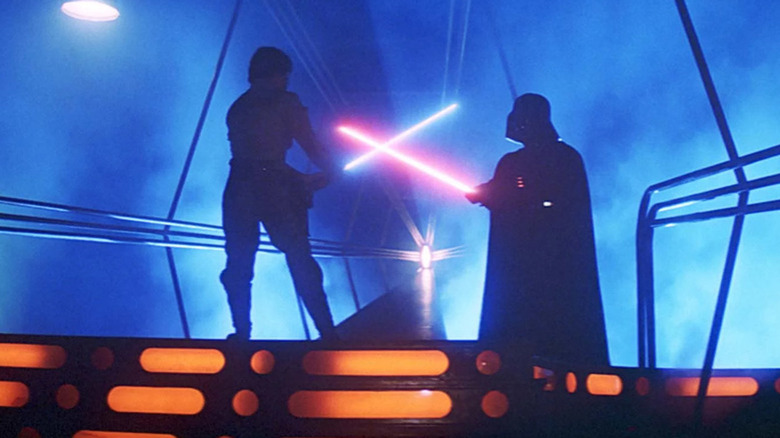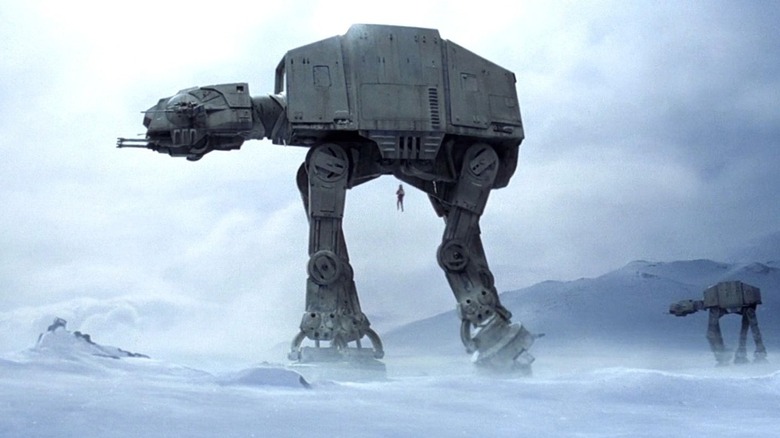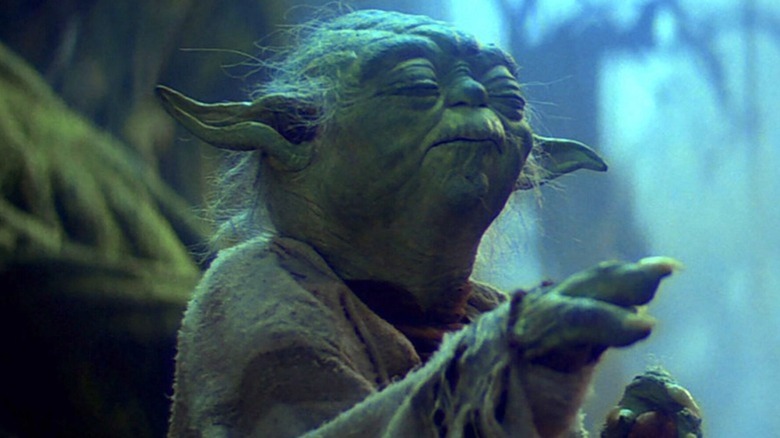The Empire Strikes Back Was A Massive Undertaking For The Star Wars Sound Department
"Star Wars" was an all-in gamble for George Lucas in 1977. Even with the blockbuster success of 1973's "American Graffiti," the filmmaker was taking a massive risk by creating a sprawling, richly imagined sci-fi/fantasy saga from scratch. Just about every studio in Hollywood passed on the project. No one understood it. Alan Ladd, then the head of 20th Century Fox, didn't get it either, but he believed in Lucas enough to give him a budget in the neighborhood of $10 million. This translates to $52 million in 2022: not exorbitant, but big enough that Fox would feel a bit of financial pain if the film flopped.
It was impossible to predict just how emphatically moviegoers would connect with "Star Wars," and there was no road map for how to capitalize on its unprecedented success. Lucas and the VFX wizards at Industrial Light & Magic had pioneered new techniques to capture the thrilling intergalactic dogfights between X-Wing spacecraft and TIE Fighters. There was just as much invention at work in every other aspect of the production, including the sound department. Headed up by Ben Burtt, the soundscapes of Tatooine, the Millennium Falcon and the Death Star were densely textured; they immersed the viewer in Lucas' fantastic new world, and played a significant role in spurring people to come back for more.
Fox certainly wanted more, which was both a blessing and a truly frightening prospect. As Ben Burtt told Empire in 2020, "[E]ven though there was lots of stress to get ["Star Wars"] done, we were young and we were vigorous and what did we have to lose? There was no reputation to uphold, and no one foresaw that there was going to be a reputation." Now that they were "award-winning geniuses," Burtt and company couldn't just recycle what worked the first time. They had to break new ground.
And that's precisely what they did on "The Empire Strikes Back."
The sonic majesty of that galaxy far, far away
The second "Star Wars" film was such an enormous undertaking, Lucas handed off the directorial reins to Irvin Kershner, so he could oversee the production's myriad technical complexities. With our heroes visiting a new set of planets (Hoth, Dagobah and Bespin), Burtt needed to find a diverse array of sounds that would make these places feel as real and lived-in as those in the previous movie. Per Burtt:
"I would say there were about one thousand different things that needed to be addressed in the movie in terms of projects for sound effects creation. I went back a few years ago and I counted 'em up. The organic nature of the sound is the defining basis for everything done in Star Wars. That was really George's direction from the beginning, so we got used to that sort of thing and looked for it."
With much more money to spend, Burtt found himself going anywhere he needed to go to capture unique audio. This resulted in the building up of the Lucasfilm sound library.
"[Producer] Gary Kurtz was onboard with that idea and made sure we had a budget to travel if we needed to. If we wanted to go to the state of Washington to record a bear, we could do it. If we wanted to go to Oklahoma to record a building demolition, well, we would send somebody or I would go. Lucasfilm looked at this as an investment for the future."
A stunning aural legacy
Every technical aspect of the ongoing "Star Wars" saga has always been top notch, but the sound design and mixing of masters like Burtt and Gary Rydstrom may be the films' most crucial feature. The CG gets a bit samey sometimes, but the sonic breadth of the universe is wildly particular and inventive. The roar of TIE Fighters soaring through space, the unseen lifeforms lurking beyond the Dagobah mist, the whirring and beeping and what-have-you of the series' wide assortment of droids... these movies are bursting with the most wonderfully bizarre noises.
You can carp about the unadventurous storytelling, but there isn't a series of movies in film history with more divine ear candy than "Star Wars."


